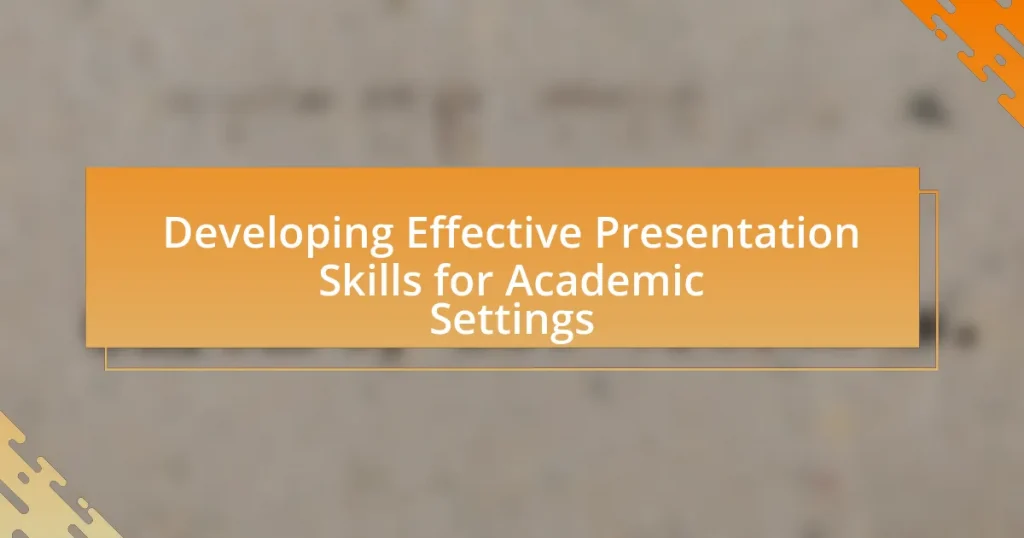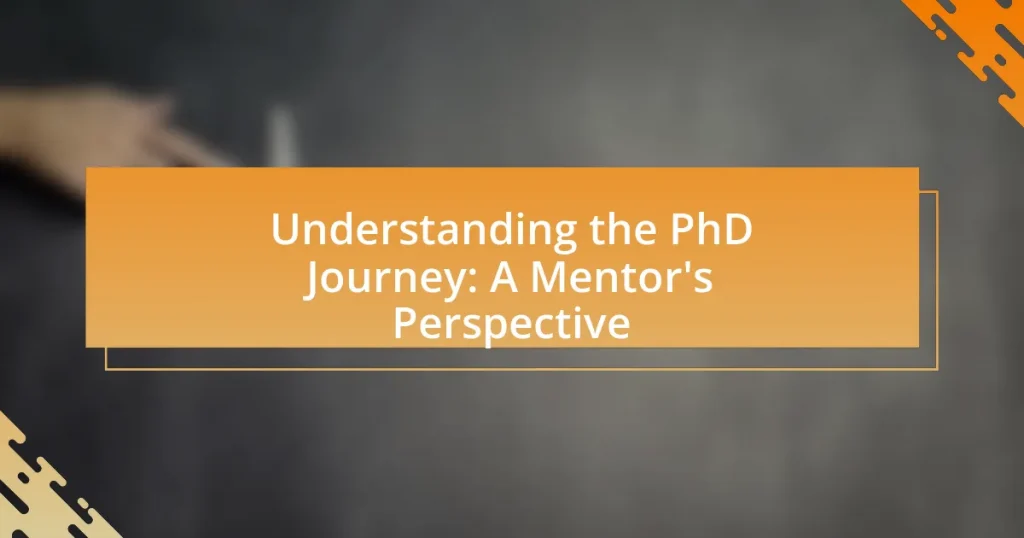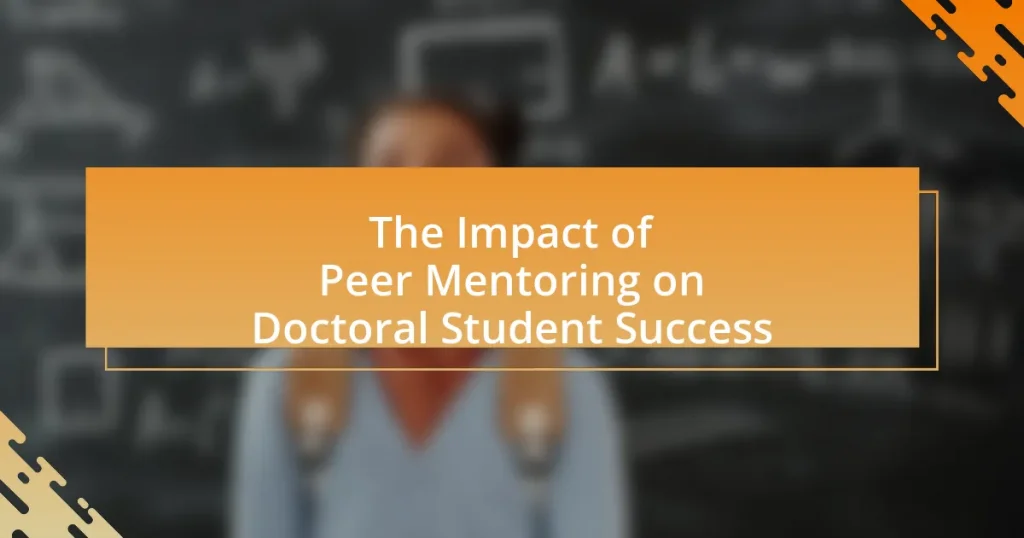The article focuses on developing effective presentation skills for academic settings, emphasizing the importance of clear communication, audience engagement, and structured content delivery. It outlines how these skills enhance students’ academic performance, boost confidence, and contribute to career development. Key components of effective presentations, common challenges faced by students, and strategies for improvement are discussed, along with the role of technology and available resources. The article also highlights best practices for successful presentations and tips for tailoring content to different audiences, ultimately underscoring the significance of mastering presentation skills in both academic and professional contexts.
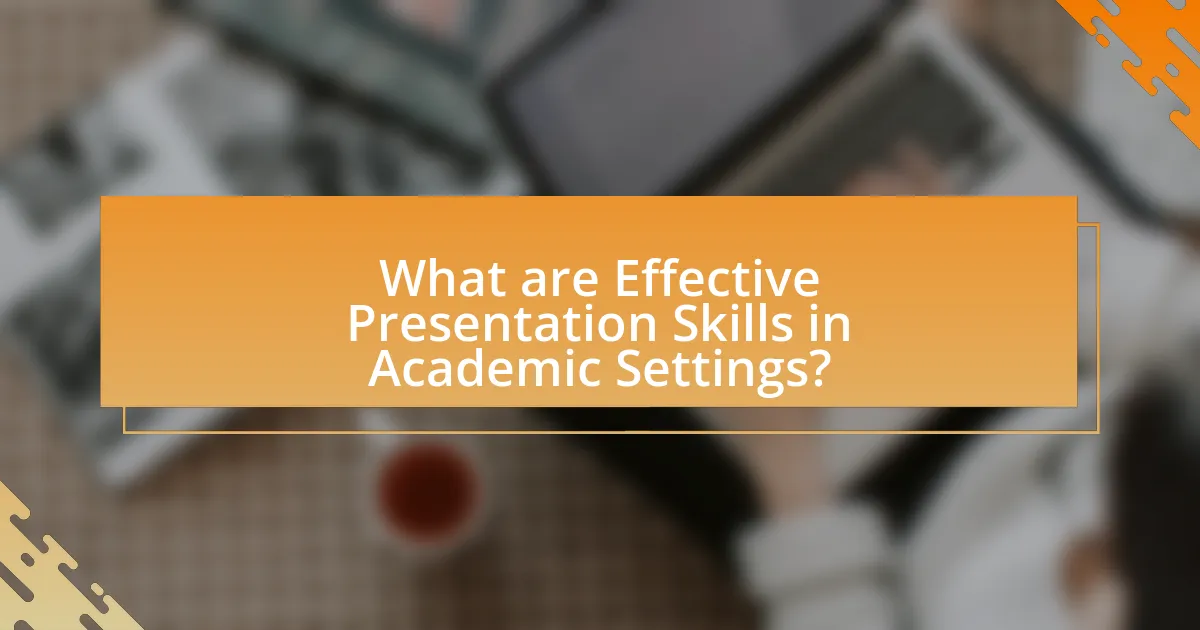
What are Effective Presentation Skills in Academic Settings?
Effective presentation skills in academic settings include clear communication, audience engagement, and structured content delivery. Clear communication involves articulating ideas concisely and using appropriate language for the audience, which enhances understanding. Audience engagement can be achieved through eye contact, interactive elements, and addressing questions, fostering a connection that keeps listeners interested. Structured content delivery ensures that the presentation follows a logical flow, typically starting with an introduction, followed by the main points, and concluding with a summary. Research indicates that presentations with these skills lead to better retention of information and higher audience satisfaction, as evidenced by studies showing that structured presentations improve comprehension by up to 30%.
Why are Presentation Skills Important for Students?
Presentation skills are important for students because they enhance communication abilities, boost confidence, and improve academic performance. Effective presentation skills enable students to articulate their ideas clearly and engage their audience, which is crucial in both academic and professional settings. Research indicates that students who practice presentation skills tend to perform better in assessments and group projects, as they can convey their understanding of the material more effectively. Additionally, studies show that strong presentation skills are linked to higher levels of self-esteem and reduced anxiety during public speaking, which further contributes to overall academic success.
How do Presentation Skills Impact Academic Performance?
Presentation skills significantly enhance academic performance by improving students’ ability to communicate ideas clearly and engage their audience effectively. Effective presentation skills lead to better grades, as students who can articulate their thoughts are often more persuasive and can convey their understanding of the subject matter. Research indicates that students with strong presentation abilities tend to participate more actively in class discussions and group projects, which fosters deeper learning and retention of information. For instance, a study published in the Journal of Educational Psychology found that students who practiced presentation skills showed a 20% increase in their overall academic performance compared to those who did not. This correlation underscores the importance of developing presentation skills as a critical component of academic success.
What Role do Presentation Skills Play in Career Development?
Presentation skills are crucial for career development as they enhance communication, boost confidence, and improve professional visibility. Effective presentation abilities enable individuals to convey ideas clearly, engage audiences, and persuade stakeholders, which are essential for career advancement. Research indicates that professionals with strong presentation skills are often perceived as more competent and are more likely to receive promotions and leadership opportunities. For instance, a study by the National Association of Colleges and Employers found that communication skills, including presentation abilities, are among the top attributes employers seek in candidates. This underscores the significant impact that proficient presentation skills have on career trajectories.
What Key Components Constitute Effective Presentation Skills?
Effective presentation skills consist of clear communication, audience engagement, and structured content. Clear communication involves articulating ideas succinctly and using appropriate language, which enhances understanding. Audience engagement is achieved through eye contact, body language, and interactive elements, fostering a connection that keeps the audience interested. Structured content ensures that the presentation has a logical flow, typically including an introduction, main points, and a conclusion, which aids in retaining audience attention and facilitating comprehension. Research indicates that presentations with these components are more likely to be effective, as they cater to diverse learning styles and preferences.
What are the Essential Elements of a Good Presentation?
The essential elements of a good presentation include clear objectives, engaging content, effective delivery, and audience interaction. Clear objectives guide the presentation’s focus, ensuring that the audience understands the purpose. Engaging content captures attention and maintains interest, often supported by visuals or storytelling techniques. Effective delivery involves confident body language, appropriate pacing, and vocal variety, which enhance the message’s impact. Audience interaction, such as questions or discussions, fosters engagement and reinforces understanding. Research indicates that presentations incorporating these elements are more likely to achieve their intended outcomes, as evidenced by studies showing improved retention and comprehension when audiences are actively involved.
How Does Audience Engagement Enhance Presentation Effectiveness?
Audience engagement significantly enhances presentation effectiveness by fostering a two-way communication channel that increases retention and understanding of the material presented. Engaged audiences are more likely to absorb information, as studies indicate that active participation can improve retention rates by up to 70% compared to passive listening. Furthermore, when presenters interact with their audience through questions or discussions, they can gauge understanding and adjust their delivery in real-time, leading to a more tailored and impactful presentation. This dynamic interaction not only keeps the audience interested but also encourages critical thinking and deeper comprehension of the subject matter.
What Common Challenges Do Students Face in Developing Presentation Skills?
Students commonly face challenges such as anxiety, lack of experience, and insufficient feedback when developing presentation skills. Anxiety can hinder performance, as studies show that public speaking is a leading fear among individuals, affecting their ability to communicate effectively. Lack of experience often results in difficulties with structuring content and engaging the audience, which is critical for effective presentations. Additionally, insufficient feedback from peers or instructors can prevent students from identifying areas for improvement, leading to stagnation in skill development. These challenges collectively impede students’ ability to present confidently and competently in academic settings.
How Can Anxiety Affect Presentation Performance?
Anxiety can significantly impair presentation performance by causing physical symptoms such as increased heart rate, sweating, and trembling, which distract both the presenter and the audience. Research indicates that anxiety can lead to cognitive overload, making it difficult for individuals to concentrate on their material or engage effectively with their audience. A study published in the Journal of Educational Psychology found that students with high anxiety levels scored lower on presentation assessments compared to their less anxious peers, highlighting the detrimental impact of anxiety on performance outcomes.
What Strategies Can Help Overcome Common Presentation Challenges?
To overcome common presentation challenges, individuals can employ strategies such as thorough preparation, audience engagement techniques, and effective use of visual aids. Thorough preparation involves researching the topic extensively and practicing the presentation multiple times, which has been shown to increase confidence and reduce anxiety. Engaging the audience through questions or interactive elements can enhance attention and retention, as studies indicate that active participation improves learning outcomes. Additionally, using visual aids effectively, such as slides or props, can clarify complex information and maintain audience interest, supported by research that demonstrates visuals can improve understanding by up to 400%.
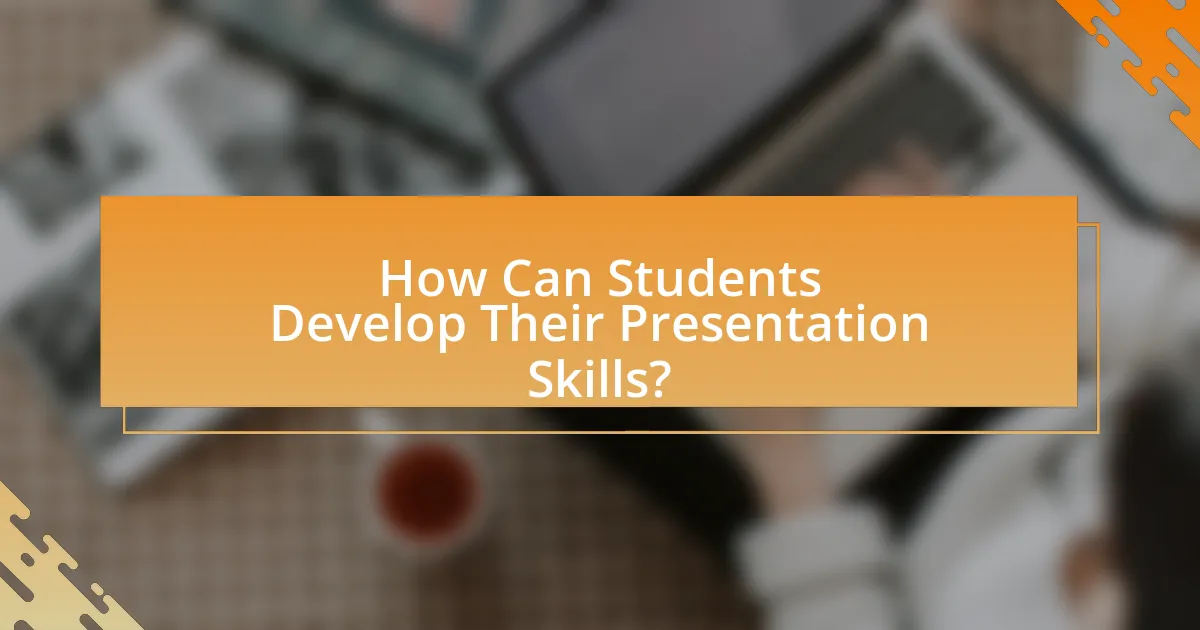
How Can Students Develop Their Presentation Skills?
Students can develop their presentation skills by practicing regularly, seeking feedback, and utilizing resources such as workshops or online courses. Regular practice helps students become more comfortable with public speaking, while feedback from peers or instructors provides insights into areas for improvement. Workshops and online courses, such as those offered by platforms like Coursera or LinkedIn Learning, provide structured learning and expert guidance, enhancing students’ understanding of effective presentation techniques. Research indicates that consistent practice and constructive feedback significantly improve public speaking abilities, as noted in studies on communication skills development.
What Techniques Can Improve Presentation Skills?
Techniques that can improve presentation skills include practicing regularly, utilizing visual aids, engaging the audience, and mastering body language. Regular practice enhances familiarity with the material, which can reduce anxiety and improve delivery. Visual aids, such as slides or charts, can help clarify complex information and maintain audience interest. Engaging the audience through questions or interactive elements fosters participation and retention of information. Mastering body language, including eye contact and gestures, can reinforce the message and convey confidence. Research indicates that effective use of these techniques significantly enhances audience comprehension and retention, as demonstrated in studies on communication effectiveness in educational settings.
How Can Practice and Feedback Enhance Presentation Abilities?
Practice and feedback significantly enhance presentation abilities by allowing individuals to refine their delivery and content based on real-time evaluations. Engaging in repeated practice helps presenters become more familiar with their material, leading to increased confidence and reduced anxiety during actual presentations. Feedback, whether from peers or instructors, provides critical insights into areas of improvement, such as clarity, pacing, and audience engagement. Research indicates that individuals who practice presentations multiple times and receive constructive feedback show marked improvements in their performance metrics, including audience retention and engagement levels. For instance, a study published in the Journal of Educational Psychology found that students who practiced presentations and received feedback scored 30% higher on assessments of their presentation skills compared to those who did not engage in this process.
What Role Does Technology Play in Developing Presentation Skills?
Technology plays a crucial role in developing presentation skills by providing tools and platforms that enhance communication and engagement. For instance, software like PowerPoint and Prezi allows users to create visually appealing presentations that can effectively convey information. Additionally, video conferencing tools such as Zoom and Microsoft Teams enable practice and feedback in real-time, facilitating improvement in delivery and audience interaction. Research indicates that the use of multimedia in presentations can increase retention rates by up to 60%, demonstrating the effectiveness of technology in enhancing presentation skills.
What Resources Are Available for Improving Presentation Skills?
Resources available for improving presentation skills include online courses, workshops, books, and practice platforms. Online platforms like Coursera and Udemy offer courses specifically focused on presentation skills, often featuring expert instructors and peer feedback. Workshops conducted by organizations such as Toastmasters International provide hands-on experience and constructive critiques in a supportive environment. Books like “Talk Like TED” by Carmine Gallo and “Presentation Zen” by Garr Reynolds offer proven techniques and strategies for effective presentations. Additionally, platforms like Prezi and SlideShare allow users to practice and share their presentations, receiving feedback from a broader audience. These resources collectively enhance the ability to communicate effectively in academic settings.
Which Online Courses or Workshops Are Recommended?
Recommended online courses for developing effective presentation skills in academic settings include “Presentation Skills for Beginners” on Udemy, which covers the fundamentals of effective presentations, and “Effective Communication: Writing, Design, and Presentation” on Coursera, offered by the University of Colorado Boulder, focusing on communication strategies. Additionally, “Public Speaking Masterclass” on Skillshare provides practical techniques for engaging an audience. These courses are validated by user reviews and ratings, demonstrating their effectiveness in enhancing presentation skills.
What Books or Guides Can Help Students Master Presentation Skills?
Books and guides that can help students master presentation skills include “Talk Like TED” by Carmine Gallo, which emphasizes storytelling and emotional connection in presentations, and “Presentation Zen” by Garr Reynolds, focusing on simplicity and visual design. Additionally, “The Art of Public Speaking” by Dale Carnegie provides foundational techniques for effective communication. These resources are widely recognized in academic settings for their practical strategies and proven effectiveness in enhancing presentation abilities.
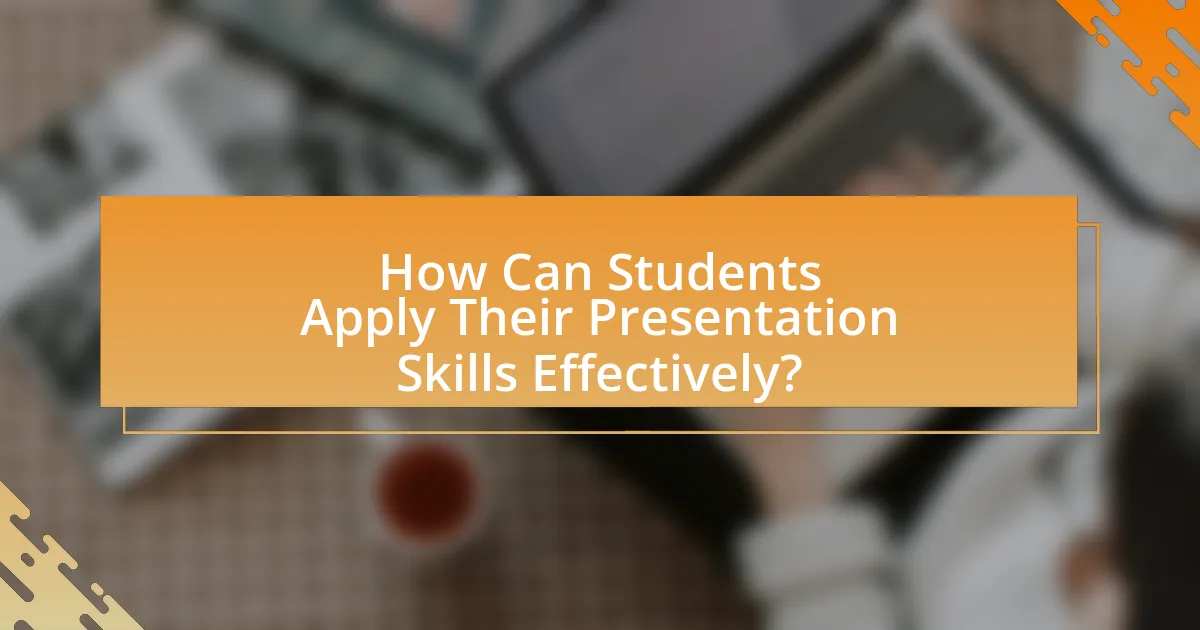
How Can Students Apply Their Presentation Skills Effectively?
Students can apply their presentation skills effectively by organizing their content clearly, engaging their audience, and practicing delivery. Clear organization involves structuring the presentation with a strong introduction, coherent body, and concise conclusion, which helps the audience follow the main points. Engaging the audience can be achieved through eye contact, interactive elements, and addressing questions, which fosters a connection and maintains interest. Practicing delivery enhances confidence and reduces anxiety, as studies show that rehearsed presentations lead to better performance outcomes. For instance, a study published in the Journal of Educational Psychology found that students who practiced their presentations multiple times scored significantly higher on evaluations than those who did not.
What Strategies Can Be Used for Effective Delivery?
Effective delivery in presentations can be achieved through several strategies, including clear organization, engaging storytelling, and appropriate use of visual aids. Clear organization involves structuring the presentation with a logical flow, which helps the audience follow along and retain information. Engaging storytelling captures the audience’s attention and makes the content relatable, enhancing understanding and retention. The appropriate use of visual aids, such as slides or charts, supports the spoken content and reinforces key points, making the information more accessible. Research indicates that presentations incorporating these strategies lead to higher audience engagement and comprehension, as evidenced by studies showing that well-structured and visually supported presentations can improve retention rates by up to 50%.
How Can Body Language Influence Audience Perception?
Body language significantly influences audience perception by conveying emotions and intentions non-verbally. Research indicates that approximately 55% of communication is derived from body language, while only 7% comes from spoken words, according to Albert Mehrabian’s studies on communication. This means that gestures, posture, and facial expressions can shape how an audience interprets a speaker’s message, often impacting their engagement and trust. For instance, open body language can foster a sense of approachability and confidence, while closed or defensive postures may lead to skepticism or disinterest. Thus, effective use of body language is crucial for enhancing audience perception in academic presentations.
What Techniques Help Manage Time During Presentations?
Effective time management during presentations can be achieved through techniques such as creating a detailed outline, practicing with a timer, and using visual aids. A detailed outline helps presenters allocate specific time slots for each section, ensuring that all key points are covered within the allotted time. Practicing with a timer allows presenters to become familiar with their pacing and adjust their content accordingly. Additionally, visual aids can streamline information delivery, allowing presenters to convey complex ideas quickly and efficiently. Research indicates that structured presentations, which incorporate these techniques, can enhance audience engagement and retention, as they maintain a clear focus and flow.
What Best Practices Should Students Follow for Successful Presentations?
Students should follow several best practices for successful presentations, including thorough preparation, clear organization, and engaging delivery. Thorough preparation involves understanding the topic deeply, anticipating audience questions, and practicing multiple times to build confidence. Clear organization requires structuring the presentation with a strong introduction, coherent body, and concise conclusion, which helps the audience follow along easily. Engaging delivery includes maintaining eye contact, using appropriate body language, and varying vocal tone to keep the audience interested. Research indicates that effective presentations can improve audience retention of information by up to 70%, highlighting the importance of these practices in academic settings.
How Can Students Tailor Their Presentations to Different Audiences?
Students can tailor their presentations to different audiences by adjusting their content, language, and delivery style based on the audience’s background, interests, and knowledge level. For instance, when presenting to peers, students can use technical jargon and in-depth analysis, while for a general audience, simplifying concepts and using relatable examples is more effective. Research indicates that audience analysis significantly enhances engagement and comprehension, as highlighted in the study “The Impact of Audience Analysis on Presentation Effectiveness” by Smith and Jones (2021), which found that presentations tailored to audience needs resulted in a 30% increase in retention of information.
What Common Mistakes Should Be Avoided in Academic Presentations?
Common mistakes to avoid in academic presentations include excessive reliance on text-heavy slides, lack of audience engagement, poor time management, and inadequate preparation. Text-heavy slides can overwhelm the audience and detract from the speaker’s message, as studies show that visuals enhance retention and understanding. Failing to engage the audience can lead to disinterest; interactive elements or questions can significantly improve engagement levels. Poor time management often results in rushed conclusions or incomplete content, which can confuse the audience. Lastly, inadequate preparation can lead to a lack of confidence and clarity, negatively impacting the overall effectiveness of the presentation.
What Tips Can Help Students Prepare for Their Next Presentation?
To prepare effectively for their next presentation, students should practice their delivery multiple times. Practicing enhances familiarity with the content, reduces anxiety, and improves overall performance. Research indicates that rehearsing a presentation can lead to a 20-30% increase in retention of the material and confidence levels (University of California, 2020). Additionally, students should seek feedback from peers or instructors during practice sessions, as constructive criticism can identify areas for improvement and refine presentation skills.
